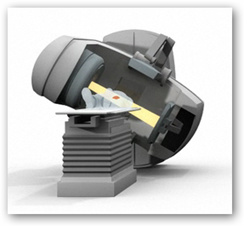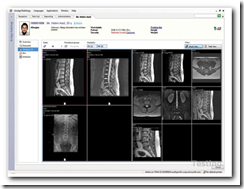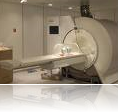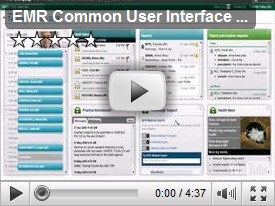Imaging and diagnosis processes save many lives each year and is a part of healthcare imaging today, no matter where you are. The safety comes as suggested here with better training, but more importantly better and revised software is the key. The reason I say this is you can have the absolutely best trained, certified and qualified technician working and if the software is not doing it’s part, it is not the fault of the technician. 
You also have to remember that a technician is working with the patient and programmers try but do not always anticipate every safety precaution that is needed, they try but there’s no way they can catch it all. I know, I had the same experience when writing an EMR, you can’t catch everything and the best method for me was to be the fly on the wall and observe doctors and patients working with the software, only asking a quick question when it was software related and if I needed information for a software improvement or noticed something myself that was either not working correctly or I saw an opportunity to improve it for the end users.
Sometimes end users will not always tell you there is an issue, as they see it as being small and will find a way to work around some situations or do without certain features without “bothering” the developers or software company, very common and used to make me crazy as I wanted to know if something had a glitch or needed a smoother interface. With radiation treatments a profile is created for the patient so they get the same prescribed treatment each time unless it is modified. Maintenance is required from time to time as well and what happened in Los Angeles was a reboot and a default setting came back in one are of the data, thus individuals for certain types of scans were over radiated. It is magnetized data and sometimes strange things happen and we never are able to get to the exact bottom of why. The situation in LA seemed to be a matter of the information not being saved, and thus defaults came back in place of the specifics for the type of radiation treatment.
Perhaps the reason the House woke up on this one is the fact that anyone could say “that could be me” and thus now we have an interest in technology, as that is what imaging is, it’s all about the software that runs the machines and devices. With CT scanners, the technology is getting better with higher bit machines, again a software configuration with the machine.
320 Bit CT Scanners Offer Less Radiation Exposure Than 64 Bit – New Technology Making the Difference With One Rotation
One thing you should never do is rush the software developer and push a product out there until the team is satisfied that they have covered all bases, and there are  some cases where this does happen in order to meet deadlines, nobody will fess up to it, but has been going on for years to get a product on the market as soon as possible. We had the cases in New York which was horrible and went back to software settings. The programmer assumes when writing the software that the alerts put in place will be seen, but again, we have a tech working with the patient and thus there is a level of distraction when they did not see the the full levels of radiation being allowed through.
some cases where this does happen in order to meet deadlines, nobody will fess up to it, but has been going on for years to get a product on the market as soon as possible. We had the cases in New York which was horrible and went back to software settings. The programmer assumes when writing the software that the alerts put in place will be seen, but again, we have a tech working with the patient and thus there is a level of distraction when they did not see the the full levels of radiation being allowed through.
Radiation Procedures Gone Sour – Software and Other Related Failures Lead to Death and Lifetime Illnesses
Perhaps we will continue to see members of Congress get more interested in how some of this is happening and put some additional safety alerts in place. It is good that the NIH has also stepped in here too to run an audit trail.
NIH Getting Involved in Radiation Overdoses – Planned Requirement for a Audit Trail to Track Patient Radiation Doses and Eventually Add to EHRs as well as PHRs, Google Health and HealthVault
One other item addressed here are the different and complex software programs each device uses and that is a valid issue all the way around. We could very much use some standards as we have built a very complicated world of software and at times it is asking too much to have too many levels of attention needed when trying to work with a patient. If the manufacturers would come up with at least some commonalities with screen used and processes, that would make it a whole lost easier, but we have these things called “patents” here that prohibit some of this activity, which I think is futile as one can keep their patent, but design screens of commonality for all manufacturers to use. That same fact hold true for electronic medical records too and there is a common user interface that is free for any company to work with and use with their systems. What is needed are common clinical interface screens and all the rest behind the scenes can remain as “patented” as we really need safety before patents. Here’s an example of what can be done for EHRs, and is called the “Common User Interface” and is is related as imaging can be brought up within the screens as well for viewing and reviewing. I made this post back in October 2008 about the EHR process getting to be too confusing and same can apply for imaging as well.
EHR Adoption Remains Off in the Distance – Getting way to complicated
I did a video with myself using the interface demo in 2008, so it has been around that long.
There’s a lot of code already developed, so why re-invent the wheel at this point and worry about who might have the “better” code, let’s all build off of one format, at least at the front end for the users.
It’s all about the software and safety and none of this was done on purpose but with our rush to get products to market and keep people on tight efficiency schedules, stuff happens unfortunately. Perhaps this was a real wake up for Congress to realize they might need to think about adapting to a basic understanding of how software in healthcare works, and start putting stock holder dividend interests second. As the technology grows, so does the complexity of the software and when that occurs you have more computer code to work with other code, back to the integration of the algorithms.
One final comment here on software and imaging today with Senator Grassley making a suggestion or questioning the FDA running health IT, well read this example below and you can see why that would not work as the FDA required a 90 day notice to upgrade Windows, thus the conficker appeared on many MRI and CT scanners, no this is not a good idea, but when you compare the fact that Congress was “shocked” and we hear suggestions like this, we have big cases of “tech denial” and folks trying to make laws that suffer in that area. We don’t have 90 days or more to mess around today and hopefully that act of Congress needed to give the manufacturers of MRI and CT scanners has been taken care of, and if no we will hear the same old story when another virus makes it’s way to MRIs.
Now that is another scary thought there too, an MRI computer infested with a virus and what it could do to the settings, right, think about it. Mr. Grassley should spend some time with some healthcare folks perhaps to fully understand the complexities we have today.
The FDA could open the doors to work with Health IT companies but not run it and again the radiation errors all come back to software.
Hospital MRI and Other Medical Devices Infected with Conficker Virus – FDA Required 90 Day Notice before Windows Update Patch Could be Applied
You can see how up to date the FDA is on technology too, not a good idea as they have their own issues in getting their infrastructure up to date. Technology is moving fast today and we need to keep up and at least read about what’s going in the world around you, so perhaps this sad testimony today addressing the technology problems woke some folks up I hope. You need some knowledge in order to create laws to outlines areas of jurisdiction and enforcement. BD
Members of the U.S. House of Representatives subcommittee on health got an earful from members of organized medicine, patients, and other experts, and they seemed to acknowledge the complexity of the issue.

"As valuable, informative, thought-provoking, and incredibly useful as your testimony was today, we've ended up with more questions. Before we move on any legislation, we'll need to have more hearings to get answers to our questions." That's what Rep. Frank Pallone Jr. (D-NJ), chairman of the subcommittee, told invited witnesses after several hours of hearings
Rep. Henry Waxman (D-CA), chairman of the subcommittee's parent, the House Committee on Energy and Commerce, as well as Pallone and other House subcommittee members in attendance, expressed their astonishment and concern that no federal agency has authority over medical radiation issues. They were also surprised at the lack of formal regulations with respect to many facets of the use of both diagnostic imaging and therapeutic radiation equipment.
The differences in the ways that CT scanners of different manufacturers report radiation dose makes it difficult for radiologists to standardize their practice, she said. As a result, data collection relating to CT dose is limited and very difficult to obtain.
To make CT scanning as safe as possible, it is necessary to lower the radiation dose of routine CT scans, and order these exams only when necessary, Bindman-Smith said. She added that the inclusion of radiation dose exposure levels into electronic medical records would be a very positive step, and applauded the efforts of manufacturers to make CT exams safer for patients.
Radiation Oncology Digital Community on AuntMinnie.com




0 comments :
Post a Comment